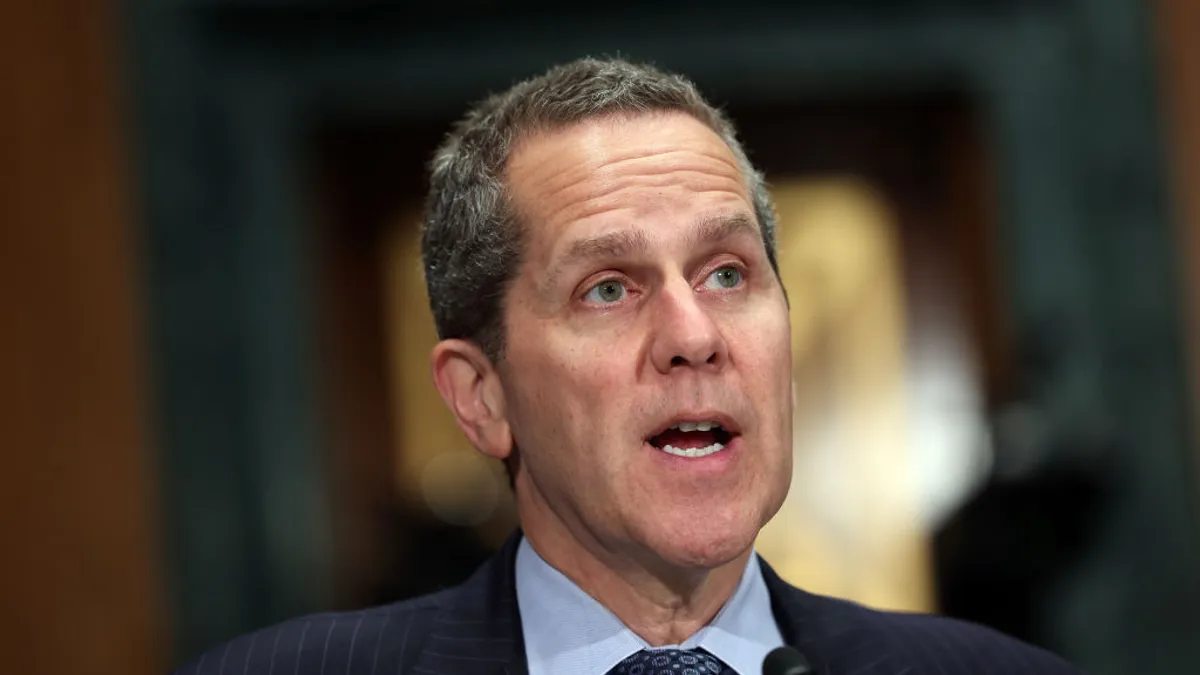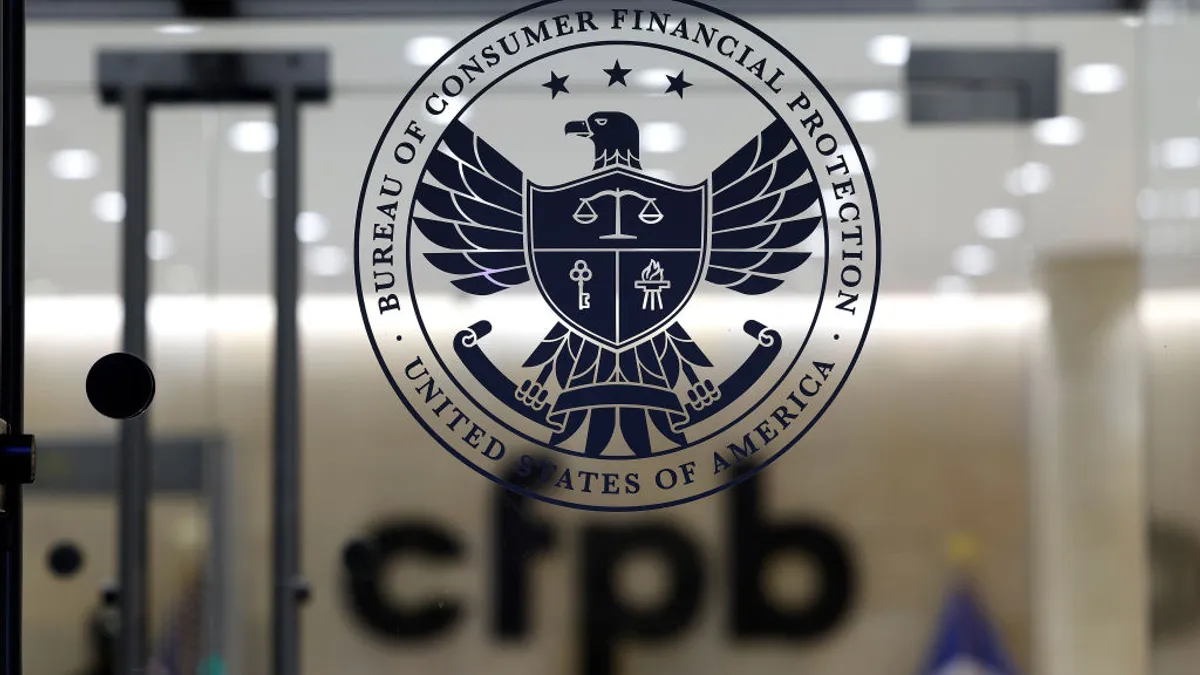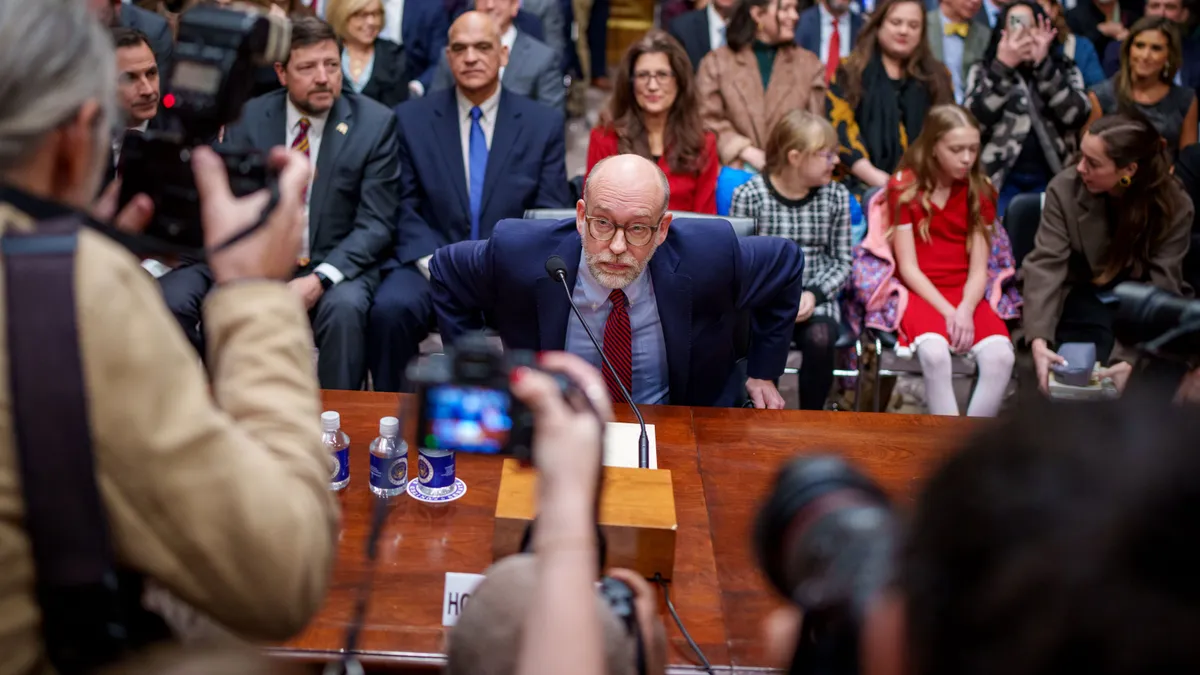President Joe Biden nominated Sarah Bloom Raskin as the Federal Reserve’s vice chairman for supervision and economists Lisa Cook and Philip Jefferson to serve on the central bank’s board, the White House announced Friday.
The nominations would fill out the seven-member Fed board and, if confirmed, would mark the first time four women would serve at the same time, outnumbering men. Cook would be the first Black woman to serve on the Fed board. Jefferson would be the fourth Black man. And the Fed would have two Black governors simultaneously for the first time.
Raskin’s candidacy had long been rumored. Her name had also been circulated in connection with the top role at the Office of the Comptroller of the Currency (OCC).
Her nomination is likely to appease progressive Democrats, who may have been less enthusiastic over Biden's move to renominate Republican Jerome Powell as the Fed’s chair.
Raskin’s stances on climate raised a red flag from one prominent Republican lawmaker Thursday over concerns the potential vice chair would push the Fed to overstep its bounds.
“Sarah Bloom Raskin has specifically called for the Fed to pressure banks to choke off credit to traditional energy companies and to exclude those employers from any Fed emergency lending facilities,” Sen. Pat Toomey, R-PA and ranking member of the Senate Banking Committee, told Bloomberg in a statement Thursday. “I have serious concerns that she would abuse the Fed’s narrow statutory mandates on monetary policy to have the central bank actively engaged in capital allocation.”
Raskin, in a May 2020 New York Times opinion piece, criticized the Treasury and Fed for allowing oil, gas and coal companies to be eligible for government-backed emergency-lending relief launched in the early COVID era.
“The decisions the Fed makes on our behalf should build toward a stronger economy with more jobs in innovative industries — not prop up and enrich dying ones,” she wrote.
In a September 2021 op-ed published with Project Syndicate, Raskin wrote, “U.S. regulators will need to leave their comfort zone and act early” to soften “changing climate’s unpredictable — but clearly intensifying — effects on the economy” before the crisis worsens and becomes more expensive.
“While none of [the U.S.’s] regulatory agencies was specifically designed to mitigate the risks of climate-related events, each has a mandate broad enough to encompass these risks within the scope of the instruments already given to it by Congress,” she wrote.
That stands contrary to Powell, who has said, according to the Financial Times, climate change “is assigned to lots of other government agencies, not so much the Fed,” adding that the central bank did not “seek to be climate policymakers.”
A heavier regulatory approach?
Raskin, now a Duke University law professor, is no stranger to the Fed. She served as a governor there from 2010 to 2014, before moving to Treasury, where she was a deputy secretary until 2017.
During her Fed tenure, Raskin contributed to rules implementing change prescribed in the 2010 Dodd-Frank Act. She also focused on addressing income inequality and boosting consumer protection. But she kept a relatively low profile on monetary policy.
In the vice chair for supervision role, if confirmed, Raskin would likely take a heavier regulatory approach than her predecessor, Randal Quarles. Between 2017 and 2021, Quarles simplified banks’ stress tests, ushered in revisions to the Volcker Rule curbing speculative bank investments, and eased capital, leverage and liquidity rules for all but the biggest lenders.
Those moves won him little popularity among progressive lawmakers.
"Our financial system will be safer when you are gone," Sen. Elizabeth Warren, D-MA, told Quarles during a May 2021 hearing, urging Biden "to fill [Quarles’] role with someone who will actually keep our financial system safe."
Raskin, in a September 2009 speech, blamed the 2007-08 financial crisis on “a deregulation fervor” precipitated by “greed, weak regulation and weak enforcement.”
Among the policy issues Raskin would likely face are the central bank’s role as stablecoins and cryptocurrencies gain more prominence — particularly as the Fed weighs issuing its own digital currency. The central bank also is developing climate-risk scenarios and considering how to incorporate them into the regular rotation of stress tests by which banks must abide.
Diversity push
In nominating Cook and Jefferson, Biden follows through on a pledge to make the Fed more diverse by race and gender. Cook, a professor at Michigan State University, has focused throughout her career on the cost of inequality from both a present and historical perspective. She analyzed racial disparities in the Paycheck Protection Program (PPP) and studied how post-Civil War violence curbed invention by Black people, leading to fewer patents and lost value.
Jefferson, a professor and vice president for academic affairs at North Carolina’s Davidson College, has focused on labor markets and poverty — particularly, economic instability faced by Black families and women-led households.
Like Raskin, he also previously worked for the Fed — as an economist in the central bank board’s monetary affairs division in 1996 and 1997, and as a research assistant in fiscal analysis from 1983 to 1985.
“When you are a person who represents diversity, and you are engaged in the conversation, it changes the nature of the conversation. We need to be sitting around the table,” Jefferson said in a 2018 interview with a Minneapolis Fed publication. “I think it is crucially important for public policy that we hear voices that represent diversity.”
Beyond diversity, “this is the biggest chance [Biden’s] got to send a message about what he wants the Fed to be focused on,” Kaleb Nygaard, a senior research associate at the Yale Program on Financial Stability, told The New York Times.
The nominees face a Senate that’s divided evenly between Republicans and Democrats, meaning each must tread carefully in confirmation hearings.






















